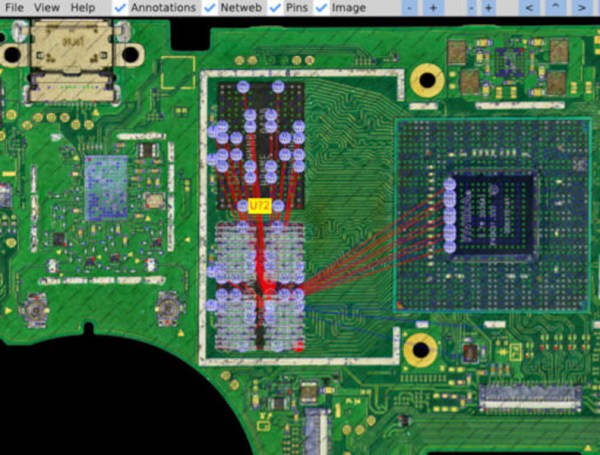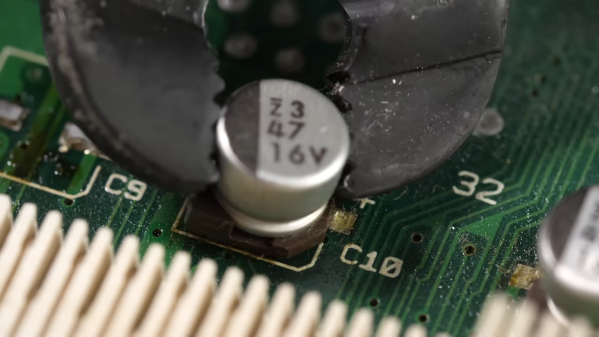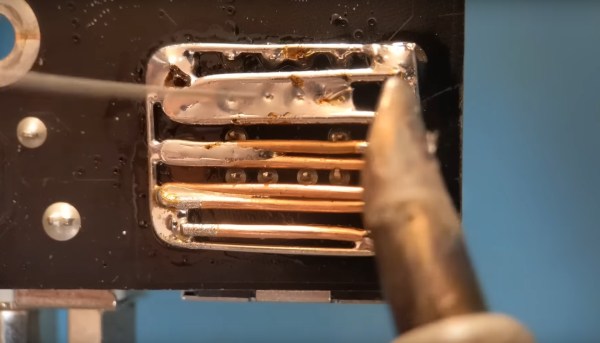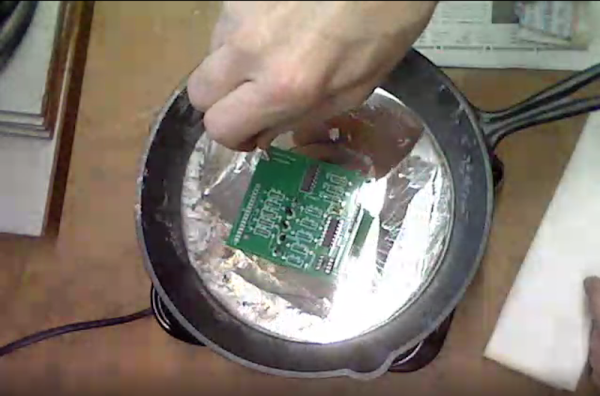For some people (e.g. this author) solder wick is a tool of last resort. Unfortunately, solder suckers and vacuum pumps lose most of their utility when you move from through-hole to SMD components, forcing us to use the dreaded wick. For those of us in this mindset, [nanofix]’s recent video which we’ve placed below the break on tips for solder wick could make desoldering a much less annoying experience.
Continue reading “Making Solder Wick Less Painful”
desoldering27 Articles
Retrotechtacular: Soldering The Tek Way
For a lot of us, soldering just seems to come naturally. But if we’re being honest, none of us was born with a soldering iron in our hand — ouch! — and if we’re good at soldering now, it’s only thanks to good habits and long practice. But what if you’re a company that lives and dies by the quality of the solder joints your employees produce? How do you get them to embrace the dark art of soldering?
If you’re Tektronix in the late 1970s and early 1980s, the answer is simple: make in-depth training videos that teach people to solder the Tek way. The first video below, from 1977, is aimed at workers on the assembly line and as such concentrates mainly on the practical aspects of making solid solder joints on PCBs and mainly with through-hole components. The video does have a bit of theory on soldering chemistry and the difference between eutectic alloys and other tin-lead mixes, as well as a little about the proper use of silver-bearing solders. But most of the time is spent discussing the primary tool of the trade: the iron. Even though the film is dated and looks like a multi-generation dupe from VHS, it still has a lot of valuable tips; we’ve been soldering for decades and somehow never realized that cleaning a tip on a wet sponge is so effective because the sudden temperature change helps release oxides and burned flux. The more you know.
The second video below is aimed more at the Tek repair and rework technicians. It reiterates a lot of the material from the first video, but then veers off into repair-specific topics, like effective desoldering. Pro tip: Don’t use the “Heat and Shake” method of desoldering, and wear those safety glasses. There’s also a lot of detail on how to avoid damaging the PCB during repairs, and how to fix them if you do manage to lift a trace. They put a fair amount of emphasis on the importance of making repairs look good, especially with bodge wires, which should be placed on the back of the board so they’re not so obvious. It makes sense; Tek boards from the era are works of art, and you don’t want to mess with that.
Mapping The Nintendo Switch PCB
As electronics have advanced, they’ve not only gotten more powerful but smaller as well. This size is great for portability and speed but can make things like repair more inaccessible to those of us with only a simple soldering iron. Even simply figuring out what modern PCBs do is beyond most of our abilities due to the shrinking sizes. Thankfully, however, [μSoldering] has spent their career around state-of-the-art soldering equipment working on intricate PCBs with tiny surface-mount components and was just the person to document a complete netlist of the Nintendo Switch through meticulous testing, a special camera, and the use of a lot of very small wires.
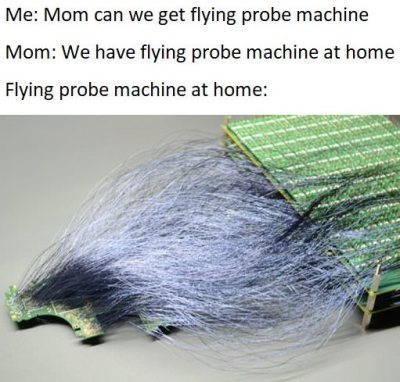 The first part of reverse-engineering the Switch is to generate images of the PCBs. These images are taken at an astonishing 6,000 PPI and as a result are incredibly large files. But with that level of detail the process starts to come together. A special piece of software is used from there that allows point-and-click on the images to start to piece the puzzle together, and with an idea of where everything goes the build moves into the physical world.
The first part of reverse-engineering the Switch is to generate images of the PCBs. These images are taken at an astonishing 6,000 PPI and as a result are incredibly large files. But with that level of detail the process starts to come together. A special piece of software is used from there that allows point-and-click on the images to start to piece the puzzle together, and with an idea of where everything goes the build moves into the physical world.
[μSoldering] removes all of the parts on the PCBs with hot air and then meticulously wires them back up using a custom PCB that allows each connection to be wired up and checked one-by-one. With everything working the way it is meant to, a completed netlist documenting every single connection on the Switch hardware can finally be assembled.
The final documentation includes over two thousand photos and almost as many individual wires with over 30,000 solder joints. It’s an impressive body of work that [μSoldering] hopes will help others working with this hardware while at the same time keeping their specialized skills up-to-date. We also have fairly extensive documentation about some of the Switch’s on-board chips as well, further expanding our body of knowledge on how these gaming consoles work and how they’re put together.
Leaky SMD Electrolytics? Try These Brute Force Removal Methods
When you say “recapping” it conjures up an image of a dusty old chassis with point-to-point wiring with a bunch of dried-out old capacitors or dodgy-looking electrolytics that need replacement. But time marches on, and we’re now at the point where recapping just might mean removing SMD electrolytics from a densely packed PCB. What do you do then?
[This Does Not Compute]’s answer to that question is to try a bunch of different techniques and see what works best, and the results may surprise you. Removal of SMD electrolytic caps can be challenging; the big aluminum can sucks a lot of heat away, the leads are usually pretty far apart and partially obscured by the plastic base, and they’re usually stuffed in with a lot of other components, most of which you don’t want to bother. [TDNC] previously used a hot-air rework station and liberally applied Kapton tape and aluminum foil to direct the heat, but that’s tedious and time-consuming. Plus, electrolytics sometimes swell up when heated, expelling their corrosive contents on the PCB in the process.
As brutish as it sounds, the solution might just be as simple as ripping caps off with pliers. This seems extreme, and with agree that the risk of tearing off the pads is pretty high. But then again, both methods seemed to work pretty well, and on multiple boards too. There’s a catch, though — the pliers method works best on caps that have already leaked enough of their electrolyte to weaken the solder joints. Twisting healthier caps off a PCB is likely to end in misery. That’s where brutal method number two comes in: hacking the can off the base with a pair of flush cutters. Once the bulk of the cap is gone, getting the leads off the pad is a simple desoldering job; just don’t forget to clean any released schmoo off the board — and your cutters!
To be fair, [This Does Not Compute] never seems to have really warmed up to destructive removal, so he invested in a pair of hot tweezers for the job, which works really well. But perhaps you’re not sure that you should just reflexively replace old electrolytics on sight. If so, you’re in pretty good company.
Continue reading “Leaky SMD Electrolytics? Try These Brute Force Removal Methods”
Finessing A Soldering Iron To Remove Large Connectors
One of the first tools that is added to a toolbox when working on electronics, perhaps besides a multimeter, is a soldering iron. From there, soldering tools can be added as needed such as a hot air gun, reflow oven, soldering gun, or desoldering pump. But often a soldering iron is all that’s needed even for some specialized tasks as [Mr SolderFix] demonstrates.
This specific technique involves removing a large connector from a PCB. Typically either a heat gun would be used, which might damage the PCB, or a tedious process involving a desoldering tool or braided wick might be tried. But with just a soldering iron, a few pieces of wire can be soldered around each of the pins to create a massive solder blob which connects all the pins of the connector to this wire. With everything connected to solder and wire, the soldering iron is simply pressed into this amalgamation and the connector will fall right out of the board, and the wire can simply be dropped away from the PCB along with most of the solder.
There is some cleanup work to do afterwards, especially removing excess solder in the holes in the PCB, but it’s nothing a little wick and effort can’t take care of. Compared to other methods which might require specialized tools or a lot more time, this is quite the technique to add to one’s soldering repertoire. For some more advanced desoldering techniques, take a look at this method for saving PCBs from some thermal stresses.
Continue reading “Finessing A Soldering Iron To Remove Large Connectors”
Solder Pot From The Kitchen
We aren’t shy of dangerous projects, but, then again, a large cooking pan full of lead solder might be a bit much, even for us. It goes without saying that you should be extremely careful and you won’t want to use any of the cookware again for any other purpose. You can see the build in the video below.
On the one hand, it isn’t hard to make a solder pot. All you need is a container that won’t melt and a heat source. But it seems like molten metal should be in something a little harder to tip over. The real story here is the technique for using the solder pot as the build is dead simple: a cheap hot plate and an iron skillet are all it takes.
Why do you want a solder pot? They are useful. As [Coalpeck] shows, you can use them to dip solder a through hole PCB easily enough. They are great, too, if you want to tin a lot of wires. They also can do a great job of removing parts from a board or a connector. Check out the old, but good video of a commercial unit removing a PCB connector after the main video.
We thought the temperature measurement technique of letting newspaper turn brown was interesting. Granted, a commercial solder pot big enough to be useful isn’t cheap. You can, though, get smaller pots (50-80 mm) for under $50. These will usually have a tray to catch spills and will be harder to tip over by accident. Not that you won’t want to be careful, though. If you do attempt this, we suggest you use a pan with no handle and set it in an outer pan to catch any overflow. But if you spill a few pounds of molten solder on your workbench, don’t say we didn’t warn you.
We’ve covered several homebrew solder pots over the years but, mysteriously, all the original websites are gone. We hope they are OK. We did look at a host of desoldering techniques that include the solder pot. Or ditch the pot of hot lead and try one of [Bil Herd]’s methods.
Desoldering Without Hot Air: Piece Of Wire Edition
Quite a few hackers nowadays share their tips and tricks on Twitter – it’s easy to do so, and provided either an existing audience or a bit of effort to get one, you’ll get at least a few notifications telling you that people appreciated what you had to share. Today, we’re covering two desoldering hacks highlighted there that will be useful some day, exactly when you need them. Both of them use a piece of wire and, in a way, extend the reach of your soldering iron’s tip. Copper wire would work better because of superior thermal conductivity, but other types of solid core wire will work in a pinch.
First hack is brought to us by [Erin Rose] – desoldering a microUSB socket. You need to heat up the entire shield and the pins at the same time, which the wire acts as a thermal gateway for. As long as there are melted solder bridges from sections of the wire to all the copper-to-part connection points, it should be easy to pump enough heat into the solder joints for all of them to eventually melt and give in at once.
Second hack is brought to us by [arturo182]. A piece of thick wire acts, again, as a heat conductor to desolder a 0.5mm pitch TQFP-100 package IC. You have to bend the wire into a correct shape, so that it’s as close to the pins of the TQFP as possible. In this situation, the wire performs two functions: first, transferring the heat from the iron’s tip to different points along the wire, then, as a barrier that helps solder not escape too far away from the pins. Copious amounts of flux likely desired for this one!
Hopefully, this comes handy if you ever need to replace an all-SMD part ASAP but don’t have a hot air gun or a hotplate handy. After getting this concept down to an art, we are sure you won’t limit yourself to TQFP parts and MicroUSB sockets. We’ve talked about desoldering practices before as part of our newsletter, and using lots of melted solder for part removal is not a foreign concept to us, either.
Continue reading “Desoldering Without Hot Air: Piece Of Wire Edition”



